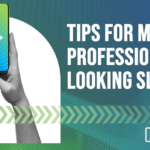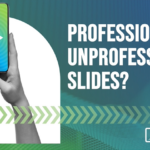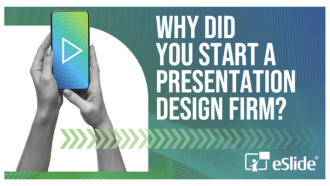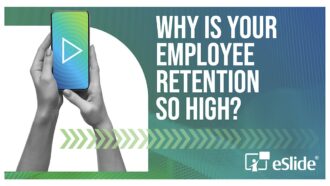Tips for Presenting to Executives
Presenting to executives can be thought of as your moment to shine or as a dreaded, nerve-racking task depending on how you look at it. How successful you are depends on a variety of factors. Of course, one key to success is using professionally designed slides that look appropriate for executive PowerPoint presentations. But, there are also some relatively simple tricks that can help minimize your stress and maximize your ability to effectively present to the executive team.
Set the Groundwork with Professional PowerPoint Presentations
Just as you want to look your best on the day you’ll be presenting to executives, you’ll also want your PowerPoint slides to pass muster. Executive PowerPoint presentations should be designed specifically to impress your audience with eye-catching, memorable images and text that strengthen what you’re sharing with them. Don’t be afraid to incorporate video and audio and by all means, build consistency into your slides with strong brand elements.
Open with Your Conclusion
Let’s face it, the executives who you’re presenting to are probably very busy people. It’s not a good idea to make them wait until the end of your presentation to find out what you’re asking of them. Professional PowerPoint presentations should kick off with strong recommendations or requests. This will make it much easier for the audience to understand your content – because they already know the context.
Clearly Communicate the Cost
If there is a cost associated with what you’re asking, don’t wait until the end of your presentation to present it. Effective presentations will include costs that are clearly framed so that your recommendation appears cost-effective. From there you can build a case for your recommendations being an investment for which the audience can expect a reasonable return.
Keep It Concise
Professional PowerPoint presentations can sometimes be lengthy. However, the higher the level of your audience, the less time they’re likely to have. Therefore, it’s critical that you start by developing an outline and then edit your content ruthlessly. Spending too much time on a single topic might mean you won’t reach other key point or even your conclusion. Jerry Seinfeld once said, “I spend an hour taking an eight-word sentence and making it five.” Why? Fewer words, carefully chosen will increase the impact of your message.
Make Eye Contact
Persuasiveness and believability requires you being able to connect with your audience. Reading from notes or from PowerPoint presentation slides will bore your readers and distract from your message. While you don’t have to memorize your entire presentation, it helps to make direct eye contact with members of your audience which requires knowing exactly what you’ll be saying for the opening, the key points, and the conclusion. If you’re looking down at your notes or reading from slides, you’re missing an important opportunity to establish a bond with your audience.
Practice Out Loud
Making a presentation to a room full of senior management can be daunting. However, it can be an amazing opportunity to climb the corporate ladder or to seal an important deal. When the stakes are high, you will definitely want to feel well-rehearsed. A significant amount of time should be spent on rehearsal. Practice it using the slides with your team. The goal is to be very familiar with what you’ll be saying. This will increase your ability to sound conversational and personable – both important to being persuasive and professional.
You can definitely feel like you’re in the hot seat when making presentations to executive audiences. Yet, they can also be tremendous opportunities to make that big win or to impress others with your knowledge and expertise. By arming yourself with executive PowerPoint presentations and the skills to impress senior management, you may just be amazed at the success you can achieve.









